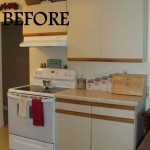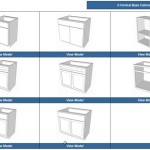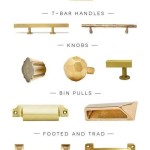Optimizing Kitchen Space with Lazy Susan Corner Cabinets
Kitchen corner cabinets often present a design challenge. Their inherent awkwardness can lead to underutilized space and difficulty accessing stored items. The Lazy Susan corner cabinet emerges as a practical and efficient solution, transforming these once-problematic areas into readily accessible storage hubs. This article will delve into the advantages, types, installation considerations, and maintenance of Lazy Susan corner cabinets.
Efficient Space Utilization
The most significant advantage of a Lazy Susan cabinet lies in its ability to maximize the utility of otherwise wasted corner space. Traditional corner cabinets without a rotating mechanism often require reaching far back and blindly searching for items. This leads to a reliance on storing frequently used items at the front and pushing less frequently used items to the back, effectively creating a "storage graveyard" inaccessible without significant effort. The Lazy Susan eliminates this problem by rotating, bringing all stored items to the user's fingertips. This allows for the efficient storage of a wide range of items, from small spice jars to larger pots and pans.
By rotating a full 360 degrees, or in some cases a partial rotation, Lazy Susans eliminate the need to reach into the dark recesses of the corner cabinet. This facilitates organization as items are easily viewed and retrieved, reducing the likelihood of duplicated purchases because forgotten items are rediscovered. Furthermore, the rotating mechanism ensures even wear and tear on stored items, as those at the back are periodically brought to the front.
Beyond simply offering accessibility, the installation of a Lazy Susan can dramatically increase the overall storage capacity of a kitchen. Corner cabinets that were previously difficult to fully utilize now become valuable storage assets. This is particularly beneficial in smaller kitchens where efficient use of every available inch of space is paramount. The increased storage can alleviate countertop clutter, contributing to a more organized and functional cooking environment.
The shape of a Lazy Susan also contributes to its efficient space utilization. Typically circular or kidney-shaped, these designs allow for a larger storage area within the constraints of the corner cabinet. The round design maximizes the available volume, particularly when compared to fixed shelving that is typically rectangular and leaves awkward gaps and unused space at the curved outer edges of the cabinet.
Moreover, Lazy Susan designs can be integrated into a variety of cabinet configurations, including both upper and lower cabinets. This flexibility allows for the creation of a cohesive storage system throughout the kitchen, maximizing the potential of every corner space.
Types of Lazy Susan Corner Cabinets
Lazy Susan corner cabinets are available in numerous configurations to suit different kitchen designs and storage needs. Understanding the different types is crucial for selecting the most appropriate option for a particular space.
The traditional full-round Lazy Susan features one or more circular shelves that rotate within the cabinet. This design is well-suited for storing a variety of items, from canned goods to cookware. The round shape, however, can sometimes leave small gaps in the corners of the cabinet, though this is often negligible compared to the overall space gained.
Kidney-shaped Lazy Susans are another popular option. These feature shelves shaped like a kidney bean and are particularly well-suited for cabinets with angled fronts. The kidney shape fits snugly against the cabinet walls, maximizing the available storage space and minimizing wasted space in the corners. This design often allows for slightly larger items to be stored more efficiently.
A variation on the standard Lazy Susan is the pie-cut Lazy Susan. These units are designed for cabinets with a 90-degree corner angle and feature shelves that are shaped like a quarter circle, resembling a slice of pie. Pie-cut Lazy Susans are often preferred for their clean lines and efficient use of space in tightly angled corners.
Another type is the blind corner cabinet pull-out system. While not a traditional Lazy Susan, these systems achieve a similar goal of maximizing accessibility in blind corner cabinets. These usually feature a series of interconnected shelves that pull out and swing to the side, bringing items stored at the back of the cabinet within easy reach. These tend to be more expensive than traditional Lazy Susans.
Finally, there are options that combine features of different types. For example, some Lazy Susans feature adjustable shelves, allowing for customization of the storage space. Others incorporate integrated door mounting, which means the doors swing open with the Lazy Susan, providing complete access to the stored items. The choice between these options depends on individual storage needs and aesthetic preferences.
Installation and Maintenance
The installation process for a Lazy Susan corner cabinet can vary depending on the type and design. Some cabinets come fully assembled, requiring only simple installation into the existing corner space. Others may require more extensive assembly, including attaching the rotating mechanism and shelves.
Before installation, it is crucial to accurately measure the available space in the corner cabinet. The dimensions of the Lazy Susan must correspond precisely to the interior dimensions of the cabinet to ensure proper functionality and prevent binding or rubbing of the rotating mechanism. Additionally, the weight capacity of the shelves must be considered to avoid overloading and potential damage.
If installing a Lazy Susan into an existing cabinet, existing shelves and hardware will need to be removed. The interior surfaces of the cabinet should be cleaned thoroughly before installing the new unit. Many Lazy Susan kits come with templates or instructions to guide the installation process. Careful adherence to these instructions is essential for a successful installation.
For those unfamiliar with cabinet installation or lacking the necessary tools, it is advisable to hire a professional installer. A professional can ensure that the Lazy Susan is installed correctly and that the cabinet is properly aligned and secure. This can prevent future problems and ensure the longevity of the unit.
Maintenance of a Lazy Susan corner cabinet is relatively straightforward. Regular cleaning of the shelves and rotating mechanism is important to prevent the buildup of dust, dirt, and grime. A damp cloth and mild cleaning solution can be used to wipe down the surfaces. Avoid using harsh chemicals or abrasive cleaners that could damage the finish.
Periodically, the rotating mechanism should be checked for smooth operation. If the Lazy Susan becomes difficult to turn, a small amount of lubricant, such as silicone spray, can be applied to the rotating mechanism. This will help to ensure smooth and effortless rotation. Also, regularly check the weight distribution on the shelves. Uneven weight distribution can strain the rotating mechanism and potentially lead to premature wear or failure.
Addressing minor issues such as loose screws or wobbly shelves promptly can prevent more significant problems down the line. By following these simple maintenance steps, a Lazy Susan corner cabinet can provide years of reliable and efficient storage.
The selection of materials also plays a significant role in the longevity and performance of a Lazy Susan. Shelves made from durable materials such as solid wood, heavy-duty plastic, or metal are less likely to warp or sag under heavy loads. The rotating mechanism should also be constructed from high-quality materials to ensure smooth and reliable operation. Bearings are a critical component of the rotating mechanism, and choosing materials like steel or durable polymers can result in longer life.

What Is A Lazy Susan Cabinet

Super Susan 90 Corner Cabinet Lazy Chrome 31 1 2 In Handles More

Stainless Steel Lazy Susan For Corner Cabinets Tansel Storage Solutions

Super Lazy Susan Cabinet With Wood Shelf Homecrest

Base Super Lazy Susan Cabinet Schrock Cabinetry

Lazy Susan Corner System Merit Kitchens Ltd

Thomasville Organization Lazy Susan Pullout

Iheart Organizing Organized Kitchen Corner Cabinet With A Diy Lazy Susan

Lazy Susan No Pole Kitchen Corner I Tansel Storage Solutions

How To Clean A Lazy Susan Maid Sailors
Related Posts








